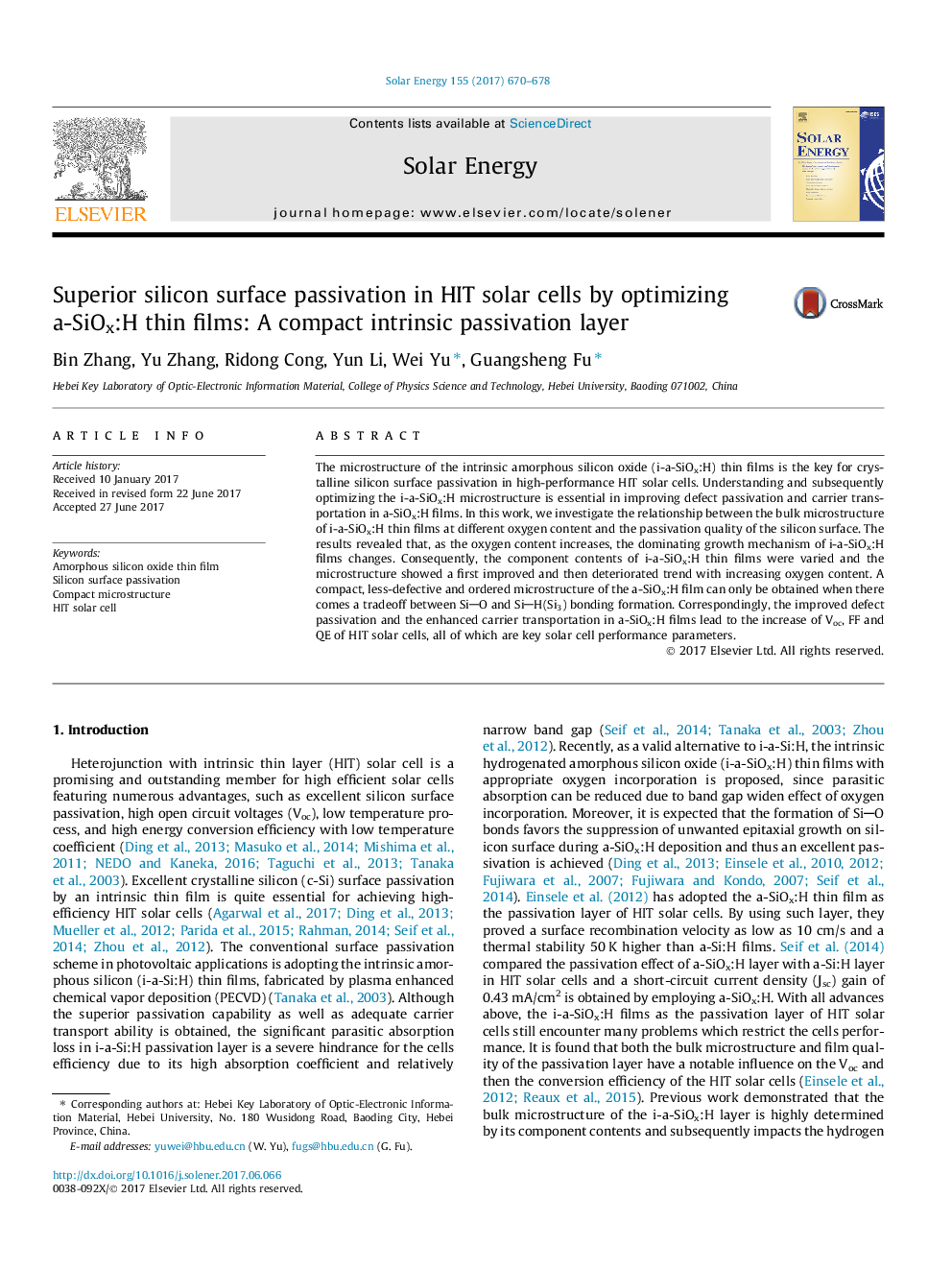| Article ID | Journal | Published Year | Pages | File Type |
|---|---|---|---|---|
| 5450659 | Solar Energy | 2017 | 9 Pages |
Abstract
The microstructure of the intrinsic amorphous silicon oxide (i-a-SiOx:H) thin films is the key for crystalline silicon surface passivation in high-performance HIT solar cells. Understanding and subsequently optimizing the i-a-SiOx:H microstructure is essential in improving defect passivation and carrier transportation in a-SiOx:H films. In this work, we investigate the relationship between the bulk microstructure of i-a-SiOx:H thin films at different oxygen content and the passivation quality of the silicon surface. The results revealed that, as the oxygen content increases, the dominating growth mechanism of i-a-SiOx:H films changes. Consequently, the component contents of i-a-SiOx:H thin films were varied and the microstructure showed a first improved and then deteriorated trend with increasing oxygen content. A compact, less-defective and ordered microstructure of the a-SiOx:H film can only be obtained when there comes a tradeoff between SiO and SiH(Si3) bonding formation. Correspondingly, the improved defect passivation and the enhanced carrier transportation in a-SiOx:H films lead to the increase of Voc, FF and QE of HIT solar cells, all of which are key solar cell performance parameters.
Related Topics
Physical Sciences and Engineering
Energy
Renewable Energy, Sustainability and the Environment
Authors
Bin Zhang, Yu Zhang, Ridong Cong, Yun Li, Wei Yu, Guangsheng Fu,
